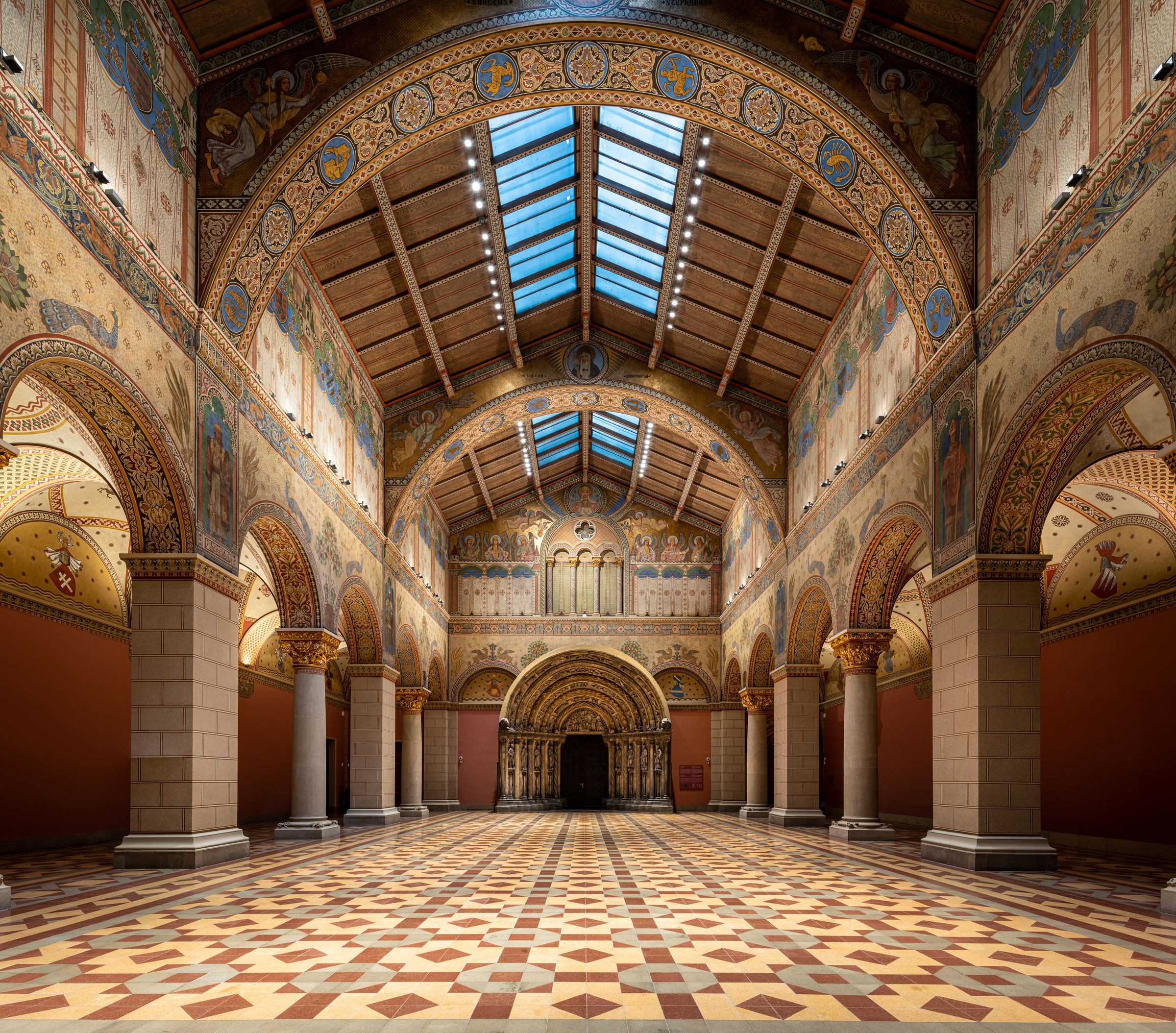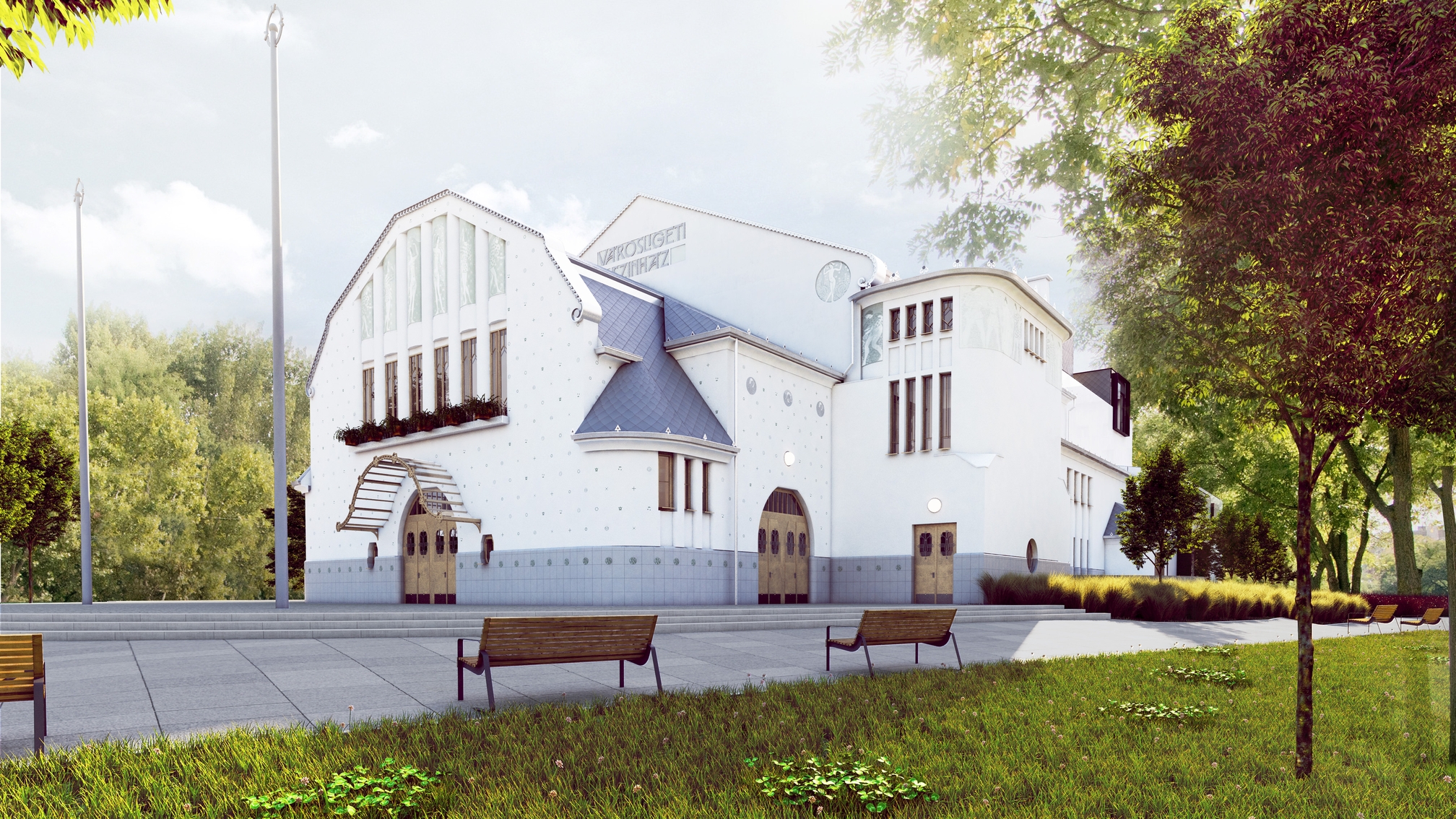This is Europe’s largest and most ambitious urban cultural development
The Liget Budapest Project is currently Europe's largest urban development project with a cultural content, thanks to which the country has been enriched by cultural and landscape architecture investments on a scale not seen since the Millennium, many of which have now become new landmarks in Hungary. Thanks to the improvements completed during the first 10 years of the project, the City Park is back to its former glory, becoming Budapest's number one family theme park, offering much more and better than before to all visitors, from the youngest to the oldest, from culture lovers to nature lovers. This is confirmed by the incredible popularity of the elements delivered so far, with Liget Budapest's attendance already exceeding seven and a half million by the end of its first decade, 2023. After the project is fully implemented in its entirety, the City Park, i.e. the Liget Budapest, will be one of Europe’s largest and most complex cultural districts with its developments encompassing 150 years.
Why the City Park?
The Városliget is the most popular park in the Hungarian capital, where not only the green space itself, but also the rich cultural and entertainment facilities, which are unique in Europe, are a great attraction for visitors. It is home to the Zoo, which opened in 1866, the Kunsthalle, built around the turn of the 19th and 20th centuries, the country's largest public art collection, the Museum of Fine Arts, Vajdahunyad Castle (including the Agricultural Museum), but it is also the site of Europe's oldest and largest outdoor ice rink, the Városligeti Ice Rink, built in the last third of the 1800s, and the Széchenyi Baths, Budapest's largest bathing complex, built in 1913. In addition to these, the Budapest Circus, which has also been operating here since the end of the 19th century, and the Millennium House, built in 1885 as the Kunsthalle, enrich the park's institutional network. Thanks to these, more than half of the park's 5 million visitors a year come to Városliget to visit the institutions located here. Few public parks in the world have such a rich network of institutions, built into the park rather than around it, dating back more than a century: perhaps the most similar is Forest Park in St. Louis, USA, which has a zoo and a science centre in addition to history and art museums. The City Park's heyday dates back to the second half of the 19th century and before World War II, but in the second half of the 20th century it gradually lost its appeal and for decades was an undeservedly neglected part of the city. The park's neglected vegetation and buildings were in need of renewal, and the park was littered with rust zones and old, dilapidated, disused buildings.
The Liget Budapest project, launched in 2013, will not upset the balance established during the organic development of the park: even after its renewal, the urban density of the City Park will remain below 7% and the proportion of green spaces will increase: this is guaranteed by the legislation that provides the framework for development. The green area of the park will be significantly increased by tens of thousands of square metres compared to the previous level, thanks to the removal and greening of many roads and parking areas: more green and more culture in the City Park. The designers of the new buildings in the park were selected through an international architectural design competition. Prior to this, no international architectural design competition had ever been held in Hungary, either during the four decades of communism or in the two and a half decades following its fall.

Awards of Liget Budapest Project
Liget Budapest Project
- MIPIM – Best Mega Futura Project of Europe, 2017
- International Travel Awards – Europe’s Best Tourism Development, 2023
- International Travel Awards – World’s Best Tourism Development, 2024
- International Travel Awards – Europe’s Best Family-friendly Development, 2024
- FIABCI XXII. Hungarian Property Development Award Competition, Audience award, 2024
- Website of the Year - Tourism category, 2025
- Website of the Year - Lifestyle and Sport category, 2025
- Website of the Year - Creative Solution of the Year Category - Quality Award, 2025
- Website of the Year - Culture category - Quality Award, 2025
- FIABCI Prix d'Excellence Awards - Master Plan category, gold winner - 2025
House of Music Hungary
- International Property Awards – Best International Public Service Architecture, 2019
- Music Cities Awards – Best Use of Music in Property Development/Real Estate, 2020
- CNN – one of the top ten most anticipated buildings of the year, 2021
- Portfolio Property Awards – Special Prize, 2022
- Time Out Magazine – best new things to do in the world in 2022
- MIPIM Awards – Grand Jury Prize, 2022
- German Design Council - Iconic Award, 2022
- World Travel Awards - Europe's Leading New Tourist Attraction, 2022
- Architecture Masterprize - Architectural Design of the Year, 2022
- Szállás.hu – Tourist Attraction of the Year, 2022
- Media Services Support and Asset Management Fund (Public media of Hungary) – Man of the Year: Sou Fujimoto, 2022
- Construction Industry Awards – cultural public building, building engineering and steel structure categories, 2022
- Hungarian Association of Building Sciences and Hungarian Building Engineering Coordination Association – Building Engineering Award, 2022
- Portfolio Property Awards special prize, 2022
- Public Acquisition Award, Building Investment category winner, 2022
- Time Magazine - World's Greatest Places, 2023
- Architectural Digest Magazine – WoW list, 2023
- Indigo Design Award - Gold Winner in Wayfinding for Graphic Design, 2023
- Hungarian Association of Building Insulators, Roofers, Tinsmiths and Carpenters – Golden Brush trophy (Roofing category), 2023
- Hungarian Association of Building Insulators, Roofers, Tinsmiths and Carpenters – Golden Brush trophy (Building Structure category), 2023
- Hungarian Association of Building Insulators, Roofers, Tinsmiths and Carpenters – Roof of the Year main prize, 2023
- International Federation of the Roofing Trade - IFD Award Gold Medal (Flat Roof section), 2023
- Association of Hungarian Architects – Pál Csonka Award: Sou Fujimoto, architect; Balázs Puskás structural engineer; Bence Varga, architect, 2023
- International Project Management Association – Global Individual Award, Gold Winner, Attila Pém, project manager of the House of Music Hungary, 2023
- The Guardian – The most inspiring tourist destination of 2024
- FIABCI Prix d'Excellence Awards - Public infrastructure, silver medal, 2024
- International Travel Awards – Europe’s Best Tourist Attraction, 2024
- Music Hungary: Crossover Award - Divas & Icons exhibition
- Music Hungary: Visual Award - Platon Karataev: „Napkötöző”
- European Museum of the Year Award, special award, 2025
- European Music Academy, audience award, 2025
Museum of Ethnography
- International Property Awards – World’s Best Public Service Architecture, 2018
- International Property Awards - World’s Best architecture main prize, 2018
- 2nd Salon of Architecture II – audience award, 2019
- LICC – London International Creative Competition, 2022
- BLT Built Design Awards – World’s Best Architecture, cultural category winner – 2022
- Inside Quality Design – Best Project of the Year, 2022
- Idea-Tops Award – Cultural Architecture, Design category, 2022
- German Design Awards, Frankfurt, Germany: “Excellent Architecture” Special Mention, 2022
- Archello / Best Projects of 2022
- BEST OF IGLOO - 2022
- International Architecture Award, 2023
- Time Magazine - World's Greatest Places, 2023
- International Federation of the Roofing Trade - IFD Award Silver medal (Flat Roof section), 2023
- DNA – Paris Design Awards, 2023
- ARCHITIZER A+ AWARD „Architecture + Facades Category”, 2023
- ARCHITIZER A+ AWARD „Architecture Museum Category”, 2023
- FIABCI Prix d'Excellence Awards - Public infrastructure, gold medal, 2024
- Architecture Masterprize, Cultural Architecture, Best of Best, 2024
- IF Design Awards, best exhibition design, 2025
Museum of Fine Arts
- Europa Nostra – European Union Cultural Heritage Award, 2020
National Museum Conservation and Storage Centre
- Budapest Architectural Award – special mention, 2020
- International Property Awards – Europe’s Best Public Service Architecture, 2021
House of the Hungarian Millennium
- FIABCI XXII. Hungarian Property Development Award Competition – Culture and education category, 2020
- Budapest Construction Industry Award – Reconstruction of a Listed Building, 2020
- Bernhard Remmers Academy – Renovation of a Historic Monument, international category winner, 2022
Star Fortress in Komárom
- Budapest Construction Industry Award – Reconstruction of a Listed Building, 2020
Museum Underground Parking
- Budapest Construction Industry Award – Transportation Facility category, 2021
Main Playground
- Landscape Architecture Award – Playgrounds and Sports Grounds category, 2021



















